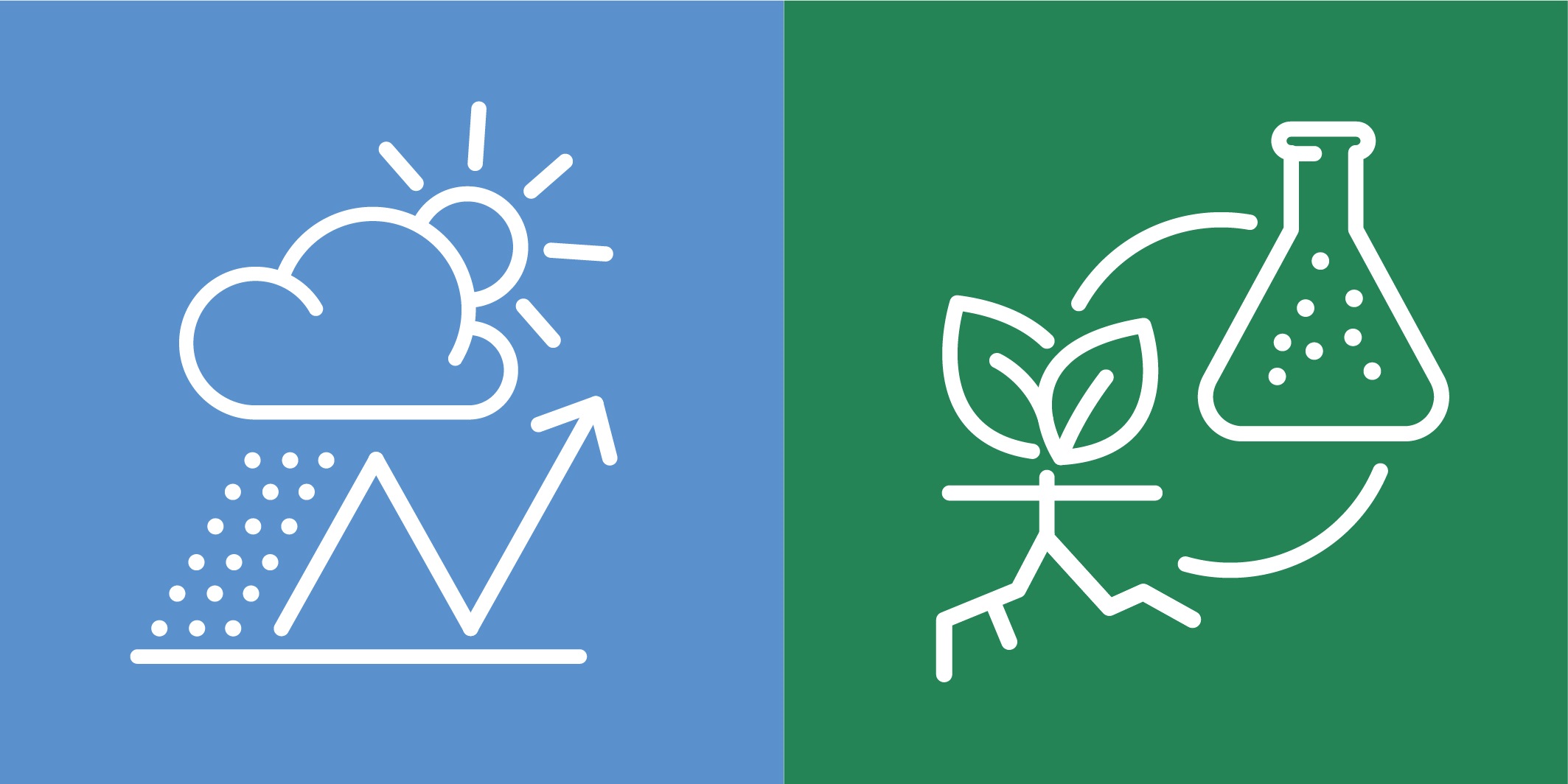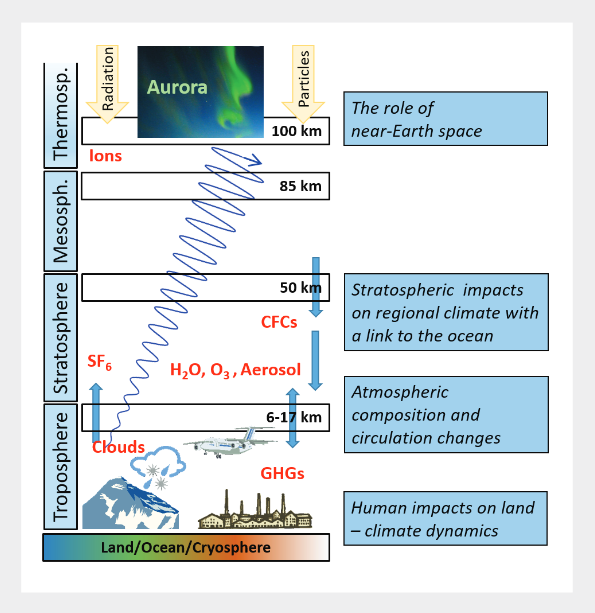Climate Feedbacks
Subtopic 1.2 of Topic 1 "The Atmosphere in Global Change".
Subtopic (ST) 1.2 assesses options that emerge, especially from the Paris Climate Change Agreement goals, to limit mean global warming to well below 2°C above pre-industrial levels and strengthen capacities to adapt to climate change. Judging the cachievability of temperature targets through policy action requires resolving the existing large uncertainties of global warming in response to increasing GHGs and changes in aerosols and land use.
These main climate drivers influence atmospheric dynamics, cloud and precipitation formation, and the radiation field in intricate nonlinear feedback loops that are not confined to specific atmospheric layers but extend throughout the entire atmosphere and are constrained by the interaction with the neighboring compartments land surface, ocean, cryosphere and near-Earth space (see figure on the left).
These main climate drivers influence atmospheric dynamics, cloud and precipitation formation, and the radiation field in intricate nonlinear feedback loops that are not confined to specific atmospheric layers but extend throughout the entire atmosphere and are constrained by the interaction with the neighboring compartments land surface, ocean, cryosphere and near-Earth space (see figure on the left).
Projects in ST 1.2
- Forests and natural systems as sources and sinks of reactive compounds/ greenhouse gases
- Agriculture and food production systems as sources and sinks of reactive compounds/ greenhouse gases
- Adaptation and resilience of (semi-) natural ecosystems to climate change
- Adaptation of agricultural landscapes to climate change
- Atmospheric composition and circulation changes
- Aerosol-Cloud-Climate-Interaction
- Stratospheric impacts on regional climate with a link to the ocean
- The role of the near-Earth space
Prof. Dr. Jan Cermak
Subtopic Speaker ST 1.2 - Climate Feedbacks
Dr. Rüdiger Grote
Deputy ST 1.2 - Climate Feedbacks




